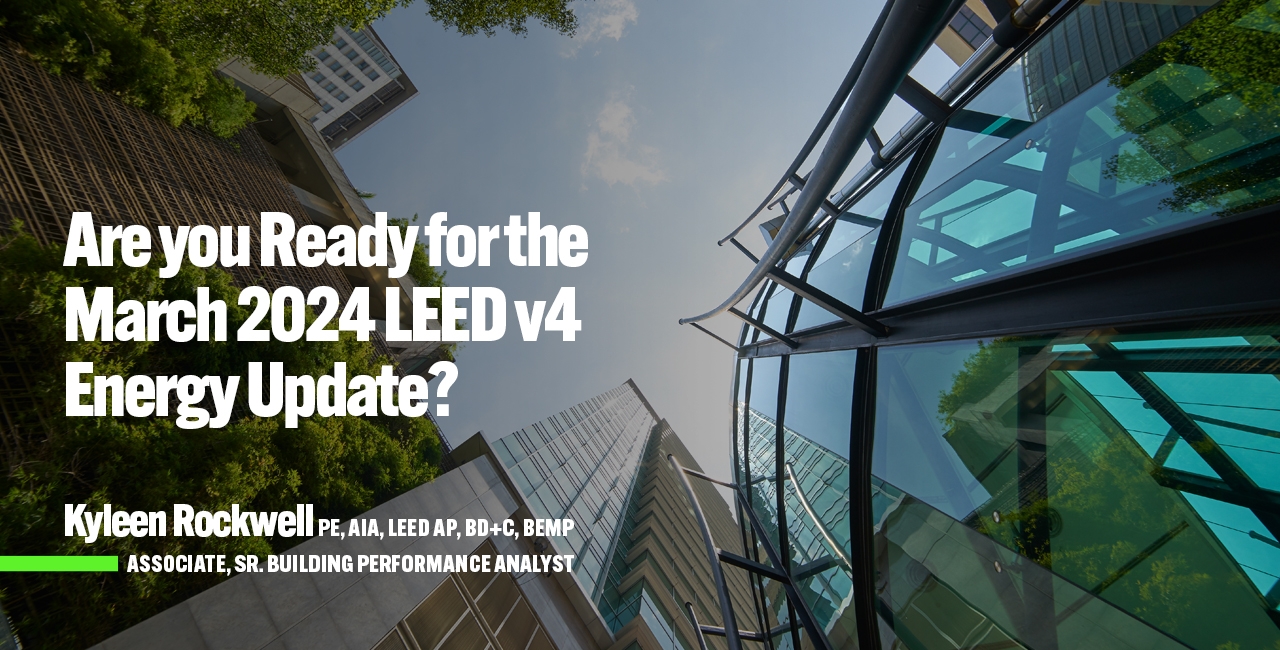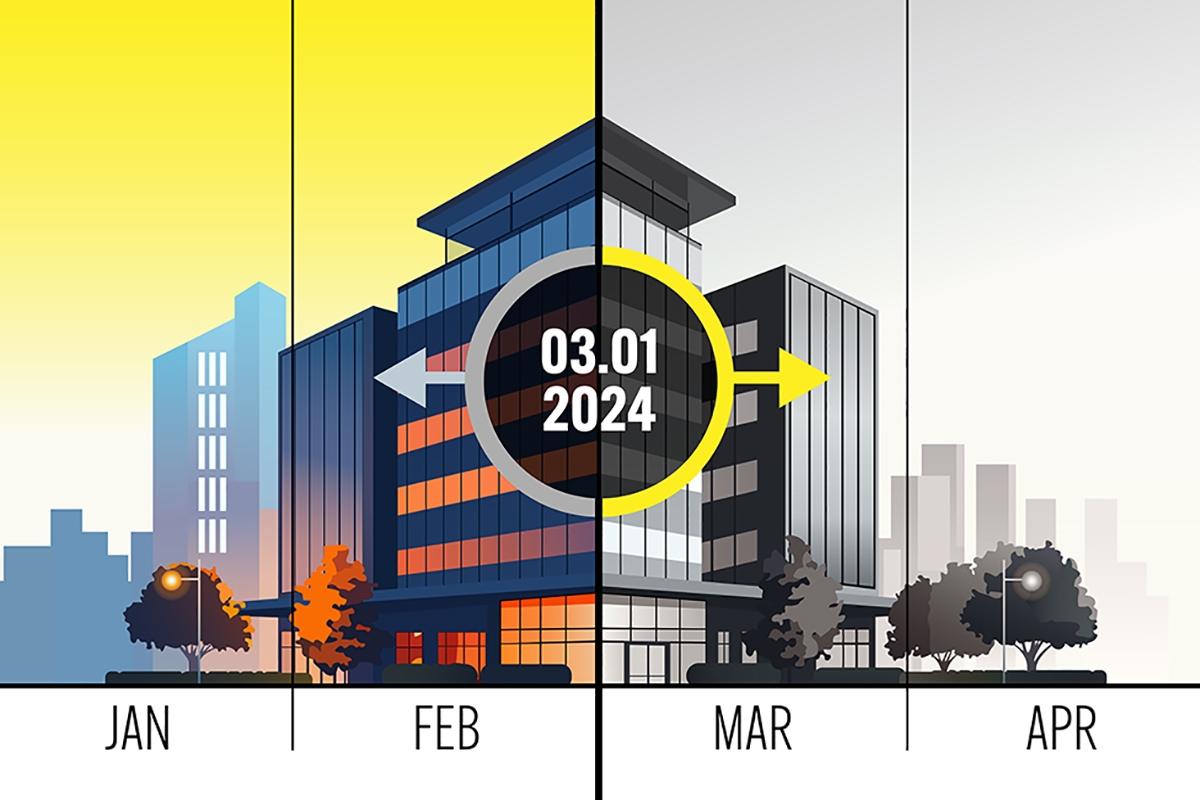
Are you Ready for the March 2024 LEED v4 Energy Update?
Feb 21, 2024
Kyleen Rockwell, PE, AIA, LEED AP BD+C, BEMP
The LEED v4 energy update has been approved by member ballot and beginning on March 1, 2024, all newly registered projects will be required to use the updated language. This update focuses on raising the threshold for energy performance and greenhouse gas emissions reductions. While USGBC is looking ahead to LEED v5 to meet the urgency of climate initiatives; the current versions of LEED could not be ignored and had to be advanced to meet the urgency of the climate crisis. This will mean that a proposed project that is registered before March 1, 2024 for LEED v4 will have greater point potential in Energy and Atmosphere (EA) than it would have if registered after March 1, 2024.
The primary changes impact the EA Prerequisite Minimum Energy Performance and EA Credit Optimize Energy Performance. ASHRAE 90.1-2010 Appendix G will remain the reference standard in LEED v4. The updated Prerequisite will allow on-site renewable energy to contribute towards compliance and allow projects to demonstrate minimum performance improvement with the traditional cost metric, a source energy metric or a greenhouse gas emissions metric. Prior to the update, New Construction projects had to demonstrate a 5% improvement over the ASHRAE 90.1-2010 Baseline; with the update, New Construction projects will have to demonstrate a 15% improvement over the ASHRAE 90.1-2010 Baseline. This raises the entry level of stringency for any LEED v4 certification registered after March 1, 2024.

The updated EA Credit Optimize Energy Performance will implement a dual metric structure that will tie points to greenhouse gas emissions performance and a source energy/energy cost metric. New Construction projects will still have an 18 point potential; however, to get those 18 points a project would need to demonstrate a minimum 60% cost or source energy savings and a minimum 85% GHG savings over the ASHRAE 90.1-2010, Appendix G Baseline. The original version of LEED v4 allots 18 points for a New Construction project with a minimum 50% cost savings over the ASHRAE 90.1-2010 Baseline.
Interface Engineering can provide additional technical guidance as project teams are navigating the new LEED landscape. Expect this landscape to shift again with the anticipated launch of LEED v5 in January of 2025. There are many paths (LEED Interpretations, v4.1 credits, Alternative Compliance Paths, Updated Prescriptive, etc.) available to maximize the LEED EA energy points that are unique to each project. Distinctions such as: site, climate, building type, local code, electrification, performance targets; may require a curated path to maximize the point potential and energy performance of a project.
Kyleen Rockwell is an Associate, Sr. Building Performance Analyst at Interface Engineering. She is currently serving on the board of the International Building Performance Simulation Association (IBPSA-USA) as well as offering her expertise to the LEED Energy and Atmosphere Technical Advisory Group (LEED EA TAG) as they have been working furiously over the last two years in offering guidance to update LEED v4 and chart the course for LEED v5.
Further Resources: